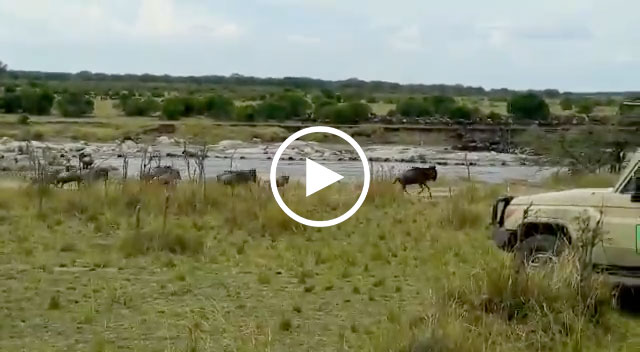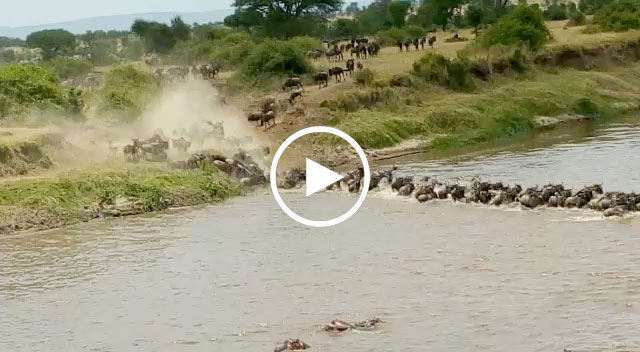Once the wildebeest herds turn to head north, they do not simply head straight for the Masai Mara then head south again, but linger criss-crossing back and forth across the Mara River – it is not a single mass movement, but more a chaotic gathering which can mean river crossings happen daily from July all the way through until late October. It is quite common to see the herds cross the river to the north one day, only for them to undergo the terror and fright to cross to the south the next day.
There are a few stragglers around Elewana Sand River in Kenya, which can be seen in front of the camp on the northern Serengeti plains and also behind, looking out across the plain of the Masai Mara. Guests have even witnessed crossings from the comfort of the camp, as shown in the video. This year has had some spectacular and exciting moments captured from incredible river crossings to action packed hunts and everything in between.Our Guides at Elewana Serenegti Migration Camp in Tanzania have reported large numbers around Kogatende, Kurya hill and Nyamarumbwa hill in Tanzania. It is that time of year when the herds start making their journey back south for the calving season that starts in January through to February when thousands of wildebeest are born on the vast plains in the south ready to start the long march north.
The action never stops as the wildebeest migrate from the vast open plains of the southern Serengeti to the rolling savannah's of the Masai Mara and back again.





